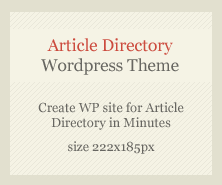The rise of neon art and custom neon signs in galleries can be attributed to a combination of aesthetic appeal, versatility, and the evolving cultural landscape. Here are several key reasons why these eye-catching artworks have gained significant popularity in contemporary art spaces: For more information please visit custom neon signs
1. Visual Impact and Modern Aesthetic
Neon lights are bold, vibrant, and instantly attention-grabbing, making them a powerful medium for artists. The glowing colors and sharp contrasts provide a visual allure that traditional art forms can’t always replicate. Neon signs are often used to create stunning, luminous compositions that change how we perceive space and shape, giving them a fresh, modern aesthetic.
2. Customization and Personalization
Custom neon signs can be tailored to fit specific themes, messages, or visual styles, allowing artists and collectors to make unique statements. This adaptability makes neon art incredibly attractive for gallery owners and artists, as it offers endless possibilities for creativity. From incorporating words and slogans to designing abstract patterns, custom neon signs add a personalized touch to any space.
3. Integration of Technology and Art
Neon art is an intersection of traditional craftsmanship and contemporary technology. The process of creating neon signs involves both manual labor and digital design, which appeals to a wide range of artists who appreciate blending various techniques. Neon art often incorporates elements of light manipulation, creating works that are not static but interact with their surroundings.
4. Pop Culture and Trend Influence
The resurgence of neon signs in pop culture, driven by everything from movie aesthetics to music videos, has also fueled their popularity in galleries. Neon has long been a symbol of urban culture, evoking the feel of nightlife, modernity, and dynamic energy. Many artists today are drawing from the aesthetic of neon signs found in bustling cities or in iconic imagery from the 1980s and 1990s.
5. Symbolism and Messaging
Neon art often conveys powerful messages, whether through words, phrases, or symbolic representations. Custom neon signs can incorporate social, political, or personal messages, allowing artists to communicate meaning in a way that’s both striking and accessible. This type of visual language resonates with a younger, more engaged audience who may relate to the themes represented in neon art.
6. Interactive and Immersive Experience
Neon signs are often used to create immersive environments in galleries. As light sources, they can influence the mood and atmosphere of an entire space. In some cases, neon artworks are interactive, inviting viewers to engage directly with the piece or to view it from different angles, adding an experiential layer to the gallery visit.
7. Sustainability and Energy Efficiency
Advances in LED technology have made neon-inspired signs more energy-efficient and sustainable. Unlike traditional neon, which involves hazardous gases and requires significant energy to operate, modern LED neon lights are more eco-friendly. This shift toward LEDs has made neon art more practical and appealing for a wider range of consumers and galleries.
8. Appeal to a Younger Audience
Younger generations, particularly millennials and Gen Z, gravitate toward neon art due to its association with digital culture and contemporary design trends. Neon signs evoke a sense of nostalgia for the digital age, blending street art, branding, and retro aesthetics that resonate with modern tastes.
9. Cultural Relevance
Neon art often reflects the diverse and multifaceted cultural currents of the moment, providing a platform for commentary on everything from consumerism and capitalism to identity and global connectivity. This adaptability allows neon art to remain culturally relevant and socially engaged, making it a sought-after medium in the art world.
Conclusion
Custom neon signs have transcended their commercial roots to become a significant artistic medium in galleries. The vibrant colors, customizable nature, and integration with modern technology contribute to their widespread appeal. As the art world continues to embrace neon’s potential, its presence in galleries will likely only grow, adding an exciting and dynamic element to contemporary art spaces.

